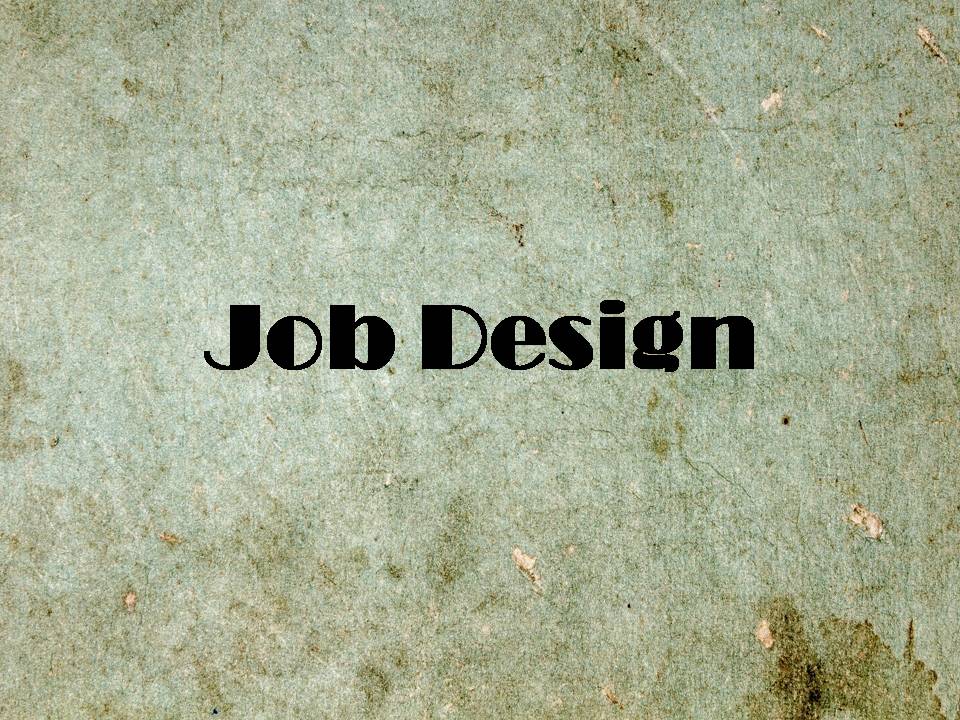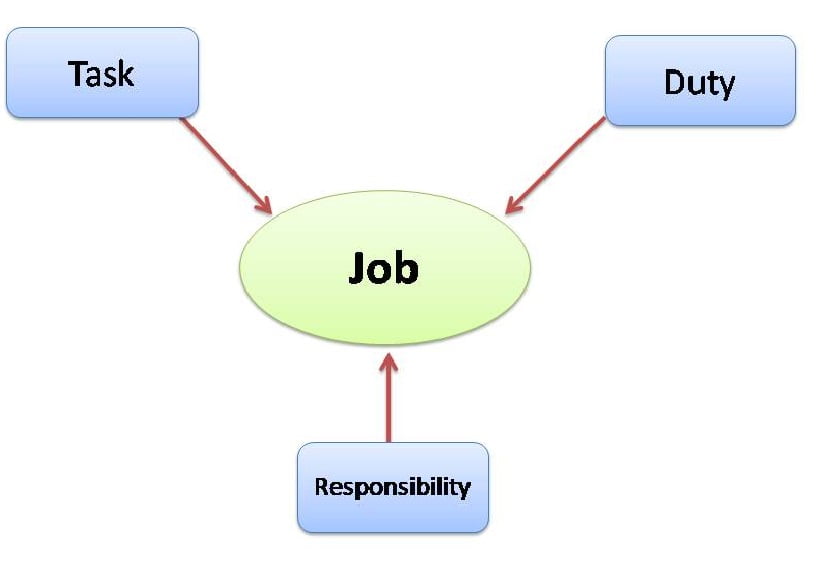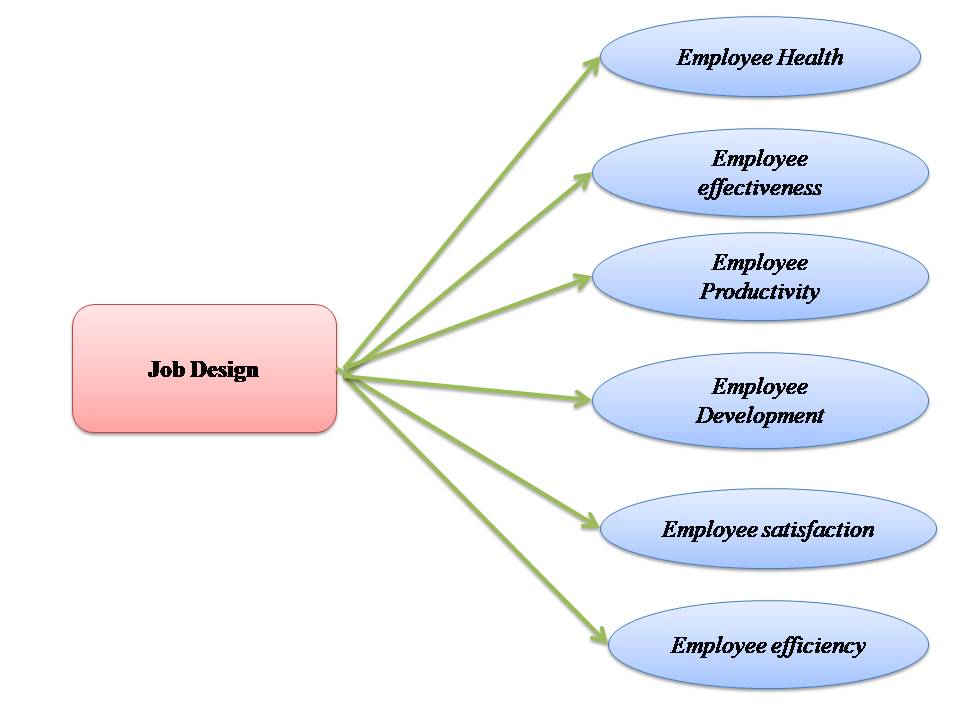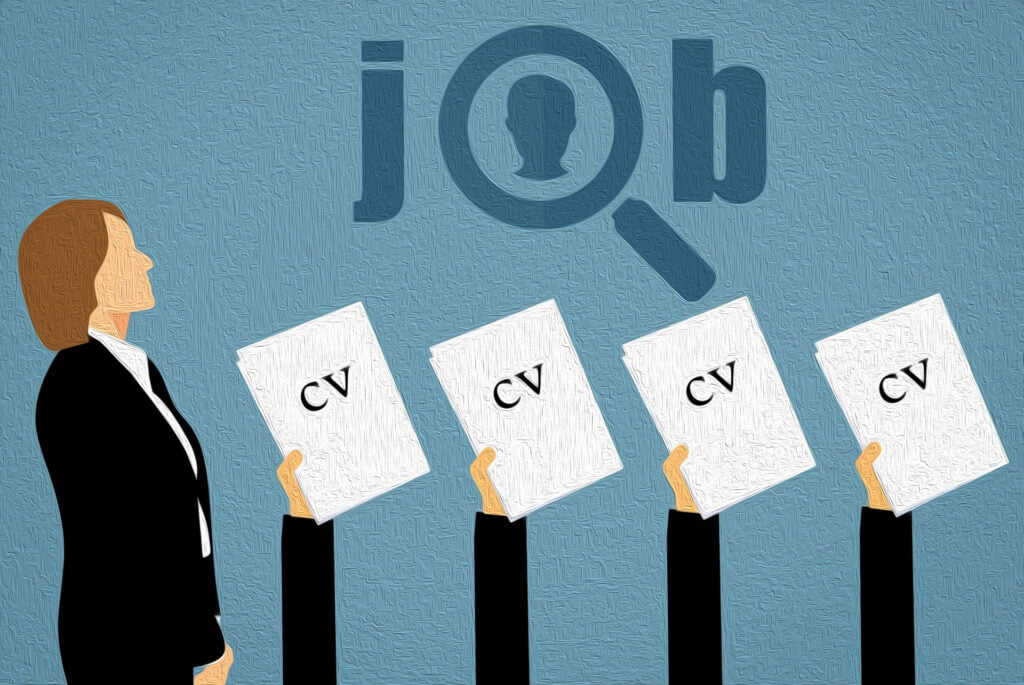Job design is one of the core functions of Human Resource Management. Basically, this function creates jobs that individuals in the entity have to perform. This Job design function is essential to the organization because its purpose is to organize and enhance work processes and improve its productivity.
This chapter includes the meaning of job design, the importance of JD, and describes the Job design techniques.

What is Job Design?
Job Design is an essential function in Human Resource Management. It is defined as a function of arranging tasks, Duties, and responsibilities into an organizational unit of work. As a result, it helps to achieve the goals & objectives of the organization. JD has a reasonable effect on productivity and job satisfaction. So job design is a creation of jobs that individuals in the organization have to perform. It is the engineering & personnel activity of specifying the contents of the job, the surrounding of the work, & the relationship of one job to another job. JD also shows the responsibilities of an employee, the level of employee satisfaction, and his productivity.
Therefore Job design (JD) means the creation of Jobs that individuals in the organization have to perform.
when considering about JOB, there are 3 components.
- Task
– The task can be defined as composed of motions and is a distinct identifiable work activity
- Duty
– a duty is composed of a number of tasks
- Responsibilities
– The obligation of performing the entrusted task and duties successfully.

So Jobs are the basic building blocks of an organization. It is performed by a job incumbent in the organization. So JD directly impacts the individual. It fixes the tasks, duties, and responsibilities of the job
What happens when the Organisation badly designed Jobs.
If the organization badly design Jobs, it will badly influence on organization as follows
- Boredom
- Job dissatisfaction
- The overall cost of the Org: increases
- Employee turnover increases
- Productivity decreases
- It is a reason for Conflict.
- Other labor problems
Why Job Design is so important to the organization?
JD plays a vital role in the organization. therefor this function is very important in many ways for the org:
- To improve employee efficiency.
- Develop employee effectiveness
- To increase employee productivity.
- Improving employee development
- To improve employee satisfaction.
- Employee health
- To reduce the cost of the org:

Job Design Techniques
The techniques can be represented as a scientific technique, Job enrichment, job enlargement, and job rotation.
Scientific Technique
Under this method, the total work divides into distinct small parts. These small parts can be identified as duties. So the final result of this technique is a more specialized job. The main objective of this technique is to maximize the organization’s productivity by maximizing employee productivity. Alternatively, this technique is called a mechanistic approach.
Advantages of specialization
- Quantity of the output increases
- Quality of the output increases
- Cost of training of the job increases
- Speed of doing the work increases
- Cost per unit declines
- Time of learning the job reduces
- Employees are replaceable
Disadvantages of specialization
- job dissatisfaction
- fatigue
- negative feeling due to lack of interest (Boredom)
- negative feeling due to repetition (Monotony)
- non-understandability about the whole work
- very difficult to find another job
Job Enlargement
Job enlargement is another method in Job Design which is increasing the scope of a job by adding a new related duty or duties in addition to the current duties.
Job enlargement alternatively called a horizontal restricting method. This is giving people more jobs to do at the same level of skill.
There are some benefits of job enlargement
- Wide range of activities
- Variety of skills
- Monotony reduces
- Work flexibility increases
- No skills training required
- Ability to get more salary
Job Enrichment
Job enrichment refers to increasing the depth of a job by expanding responsibility & authority for planning and controlling the job. The purpose of this method is to give greater satisfaction to an employee in his work.
This method was developed by an American psychologist “Fredrick Herzberg” in1968
Advantages
Improves decision making
Reduce boredom
A better working environment
A challenging & interesting job
Disadvantages
Poor performance
Ego problems
Heavier workload
Lack of preparation
Difference between Job Enrichment & Job Enlargement
- Job enlargement refers to increasing the scope of a job, and Job enrichment is increasing the depth of a job
- Job enlargement means adding new related duty or duties and an increased workload, whereas job enrichment means the improvement or an increase in authority and responsibility of the job.
- Job Enlargement is a horizontal loading method and job enrichment is a vertical loading method
- Job enlargement refers to having additional duties and responsibilities in a current job description, but in job enrichment, the employees find their job satisfaction concerning their position.
- The purpose of job enlargement is to reduce boredom and monotony, whereas the use of job enrichment is making job challenging and interesting
Job Rotation
Another technique in job design is job rotation. The job rotation can be referred to as shifting an employee ( usually a trainee) from one job to another job within a particular period of time. Because of this technique, the employee can learn about many duties in the organization. Also, it helps to add employees to the right position where they can deliver the maximum results to the organization. There are two types of job rotation
- Task rotation
- Position rotation
Benefits of job rotation
- The employee has the ability to become a multiple skill employee
- Boredom reduces
- Employee motivation increases
- Employees can deal with new challenges easily
- Increase employee satisfaction
- Improves work efficiency
- Increases productivity of employees
Disadvantages of job rotation
- Cost increases
- Wastage increases
- Cannot apply for all industries
- Disturbs to specialization
Summery
Job design is a core concept in HRM that creates jobs for the organization. It mainly focuses on the improvement of productivity and job satisfaction
If there are badly designed jobs, the organization may face some difficulties like boredom, job dissatisfaction, less productivity, employee turnover, and other labor problems.
There are many advantages in Job design, such as improving employee efficiency, Develop employee effectiveness, increasing employee productivity, improving employee development, reducing the cost of the organization, and many more
The techniques of Job design are, scientific technique, Job enrichment, Job enlargement





